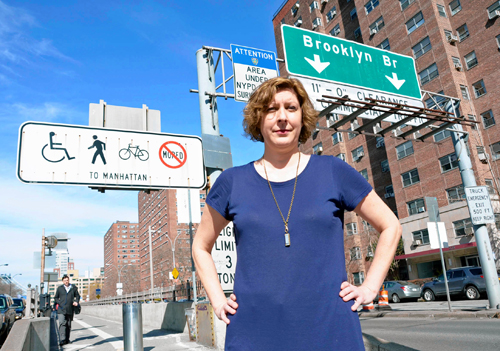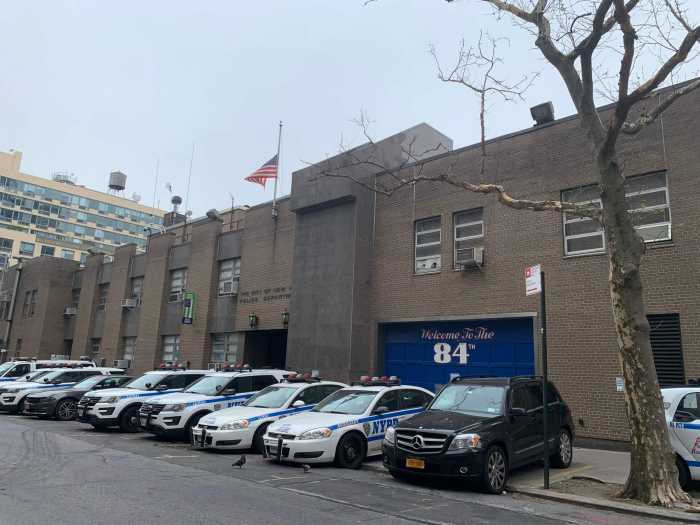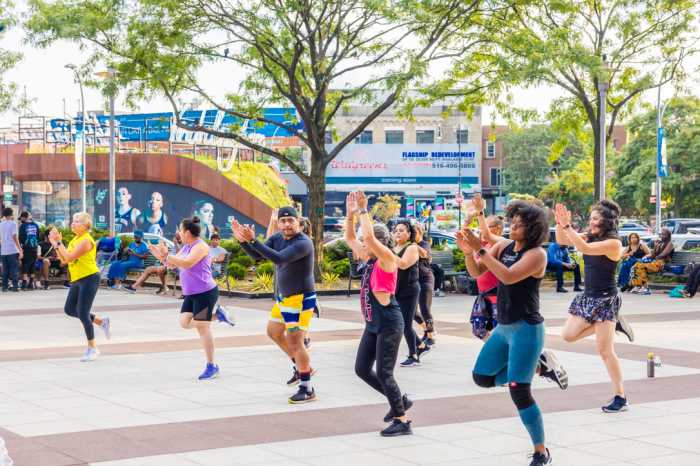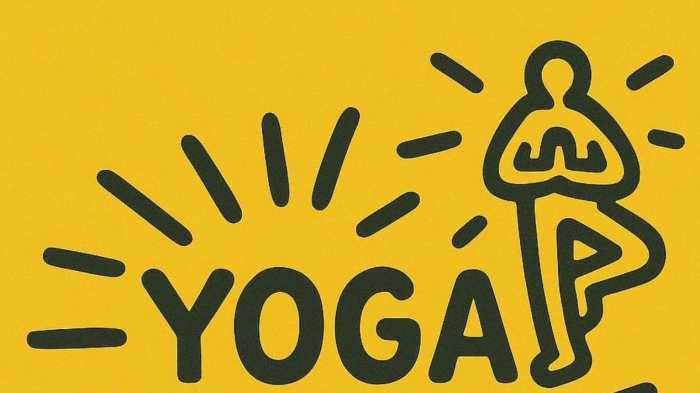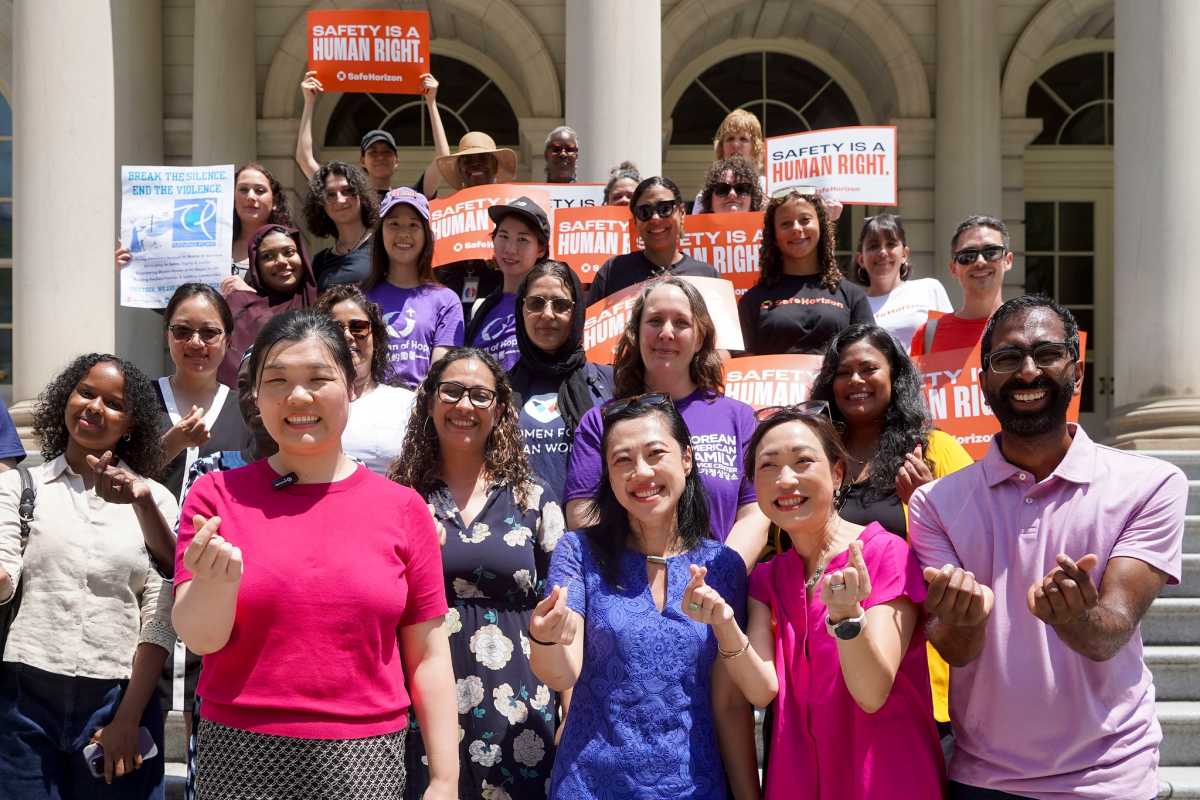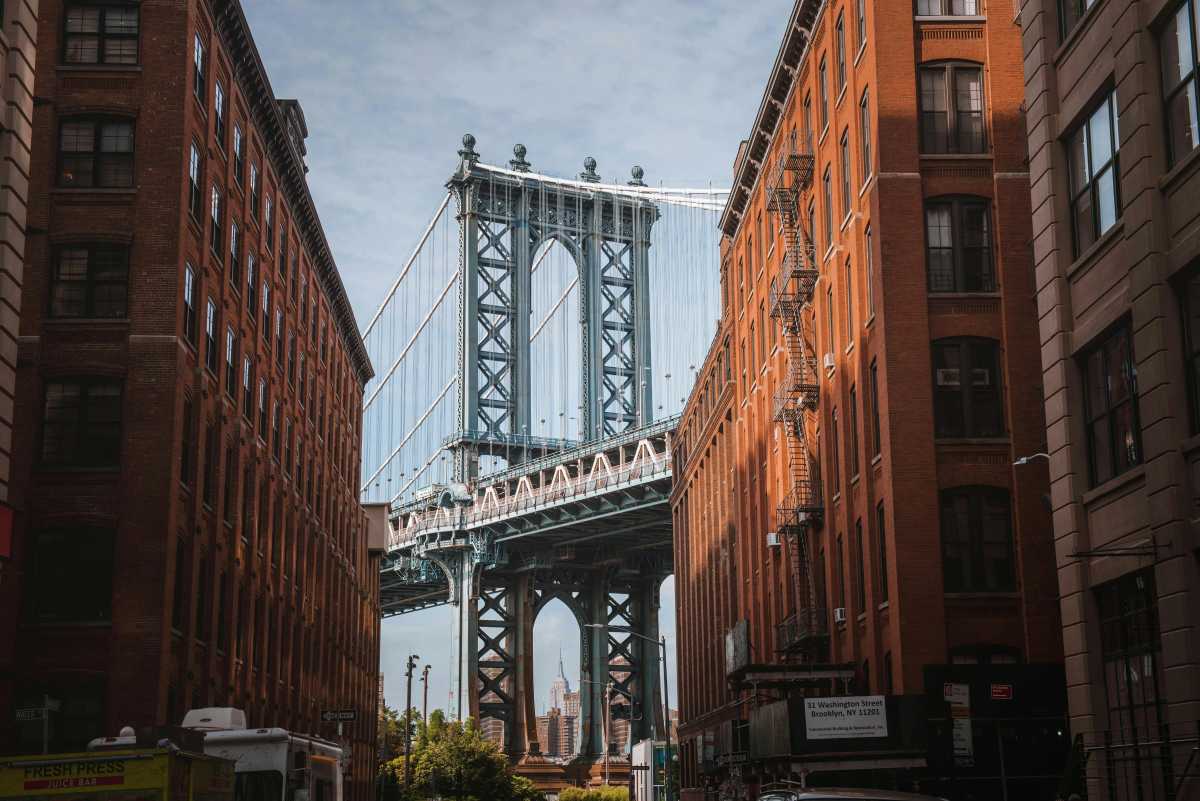A massive overhaul to the Brooklyn Bridge entrance-way that the city says will make it safer for pedestrians and bicyclists headed to and from Manhattan could make neighbors’ lives a noisy nightmare, residents warn.
The revamp proposal widens and extends the walking and bike path in the center of Adams Street, replacing the cement and metal barriers that are there now, which planners call “the cattle chute,” with trees and plants. It also eliminates one of two rows of parked cars on a service road on the Manhattan-bound side of Adams and moves the bridge traffic one lane closer to the neighboring apartment complex Concord Village, which residents say will increase traffic noise so much it could threaten their well-being.
“Noise is not a matter of comfort, but a matter of health,” said Denise Maher, a Villager and member of the activist group Everyday Adams Street, which formed in response to the proposal. “The public health of the people who live on Adams Street should be the biggest concern.”
Residents of the cooperative buildings overlooking the bridge ramp also worry that construction work for the project will kick up dust and rattle their nerves and are demanding that the city do an environmental study before lifting a single jackhammer.
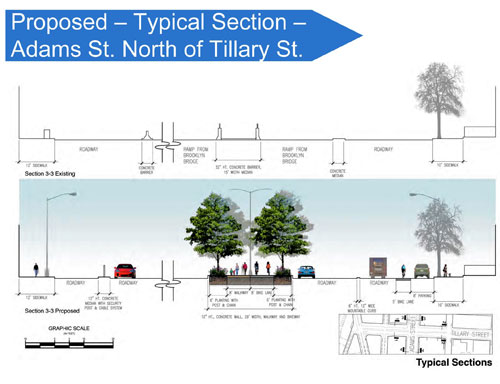
“There’s such a large population of both young and old people here,” said Concord Village resident Anita Maldonado. “What’s this going to do to us?”
The proposed sprucing-up extends the Adams Street walking and cycling path from Tillary Street to Johnson Street and removes the Adams service roads between Tillary and Johnson. It also adds features such as water-bottle filling stations, benches, street lights, trash cans, and bike racks. The Adams Street work is the first phase of a larger overhaul and is projected to cost $19.5 million.
The second phase adds trees and widens sidewalks along Tillary Street and eliminates a lane of car traffic on the thoroughfare between Cadman Plaza East and Jay Street. Under the plan, the auto areas are replaced with grassy medians and bigger strolling expanses, as well as a new row of street parking on the bridge side of the street.
Downtown’s Community Board 2 backed up the nervous neighbors when it approved a revised version of the plan at its Feb. 12 meeting, calling on the city to address the concerns before moving forward.

The city says it hears residents’ concerns loud and clear.
“We look forward to working with them further as this project proceeds,” said Nicholas Mosquera, a spokesman for the Department of Transportation.
And one group that advocates for taking back city streets from cars say that plan is a win for drivers, cyclists, and walkers because it will improve the traffic flow while reducing the noise and air pollution of idling autos and providing more space for pedestrians and two-wheelers.
“It’ll be a more calm, easy to navigate street-scape,” said Miller Nuttle, a safe streets organizer with the car critic group Tranportation alternatives.

The plan will now be reviewed by the city’s public design commission. The transportation department hopes to begin work by the end of the year.


